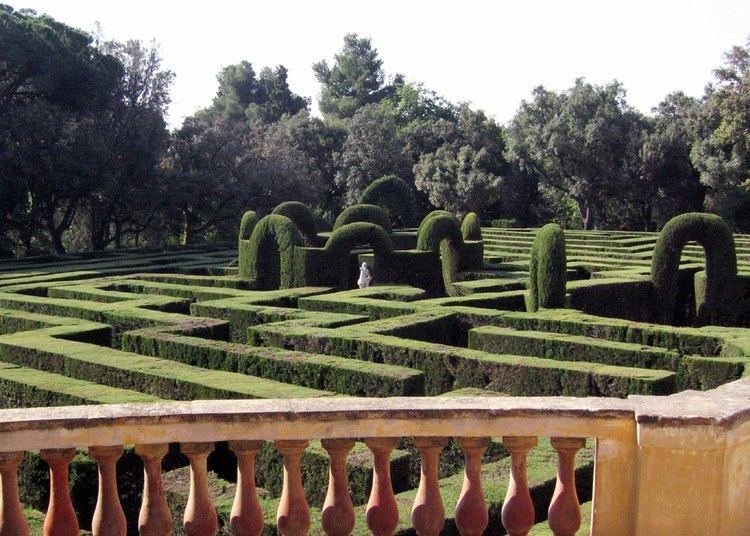Type Historical garden Created 1971 | Location Barcelona Status Open all year Phone +34 666 67 77 22 | |
 | ||
Address Passeig dels Castanyers, 1, 08035 Barcelona, Spain Hours Open today · 10AM–7PMThursday10AM–7PMFriday10AM–7PMSaturday10AM–7PMSunday10AM–7PMMonday10AM–7PMTuesday10AM–7PMWednesday10AM–7PMSuggest an edit Similar Parc de la Ciutadella, Tibidabo, Tibidabo Amusement Park, Temple Expiatori del Sagra, Mundet | ||
Parc del laberint d horta
The Parc del Laberint d'Horta ([ˈparɡ dəɫ ɫəβəˈɾin ˈdɔrtə], "Labyrinth Park of Horta", sometimes named Jardins (Gardens) del Laberint d'Horta) is a historical garden in the Horta-Guinardó district in Barcelona and the oldest of its kind in the city. Located on the former estate of the Desvalls family, next to the Collserola ridge, the park comprises an 18th-century neoclassical garden and a 19th-century romantic garden.
Contents
- Parc del laberint d horta
- Barcam11 barcelona off the beaten path awesome parc del laberint d horta
- History
- Elements of the park
- Miscellaneous
- References
Barcam11 barcelona off the beaten path awesome parc del laberint d horta
History
Works began in 1791 when marquis Joan Antoni Desvalls i d'Ardena, owner of the lot, created the design of a neoclassical garden in collaboration with Italian architect Domenico Bagutti. Execution was made under direction of master builders Jaume and Andreu Valls as well as French gardener Joseph Delvalet.
In mid-19th century, the descendants of the marquis hired architect Elies Rogent to expand the park. Rogent created then a romantic garden with flower beds, gazebos, huge trees and a waterfall. A water canal was also added to the garden, connecting the upper terrace and the intermediate one.
In 1880 a domestic garden was created beside the Desvalls palace.
At the end of the 19th century, the Desvalls estate became the venue of social and cultural events including open-air theatre performances.
In 1967 the Desvalls family handed over the park to the city of Barcelona, who opened to the public in 1971. Ample restoration works were carried out in 1994 with the financial support of the European Union.
The park is currently a garden-museum with a number of visitors limited to no more than 750 people at the same time, in order to preserve the delicate environment and structures of the area. The old Desvalls' Palace hosts, since 1993, Centre de Formació del Laberint (a city-owned institute of Gardening education) as well as a specialized library.
Elements of the park
Right next to the entrance of the park stands the former palace of the Desvalls family, a building with neoarabic and neogothic elements. The Torre Sobirana, an ancient medieval watchtower, ia also part of this complex.
The park, which extends over a surface of 9.1 hectares, is divided into two parts: the neoclassical garden and the romantic garden. All around the park there are numerous sculptures, some depicting motives of Greek mythology and others with folk motives, as well as a number of fountains, springs, and pools.
The neoclassical garden comprises three terraces:
The romantic garden is distributed in a series of flower beds and small squares under the shade of huge trees. On the northernmost border of this side of the park, there's a waterfall. There aren't many traces left of the original design, but it seems that the romantic garden was built alluding to the theme of death - there even used to be a replica of a small graveyard, long gone - while the neoclassical garden revolves around the theme of love.
The park gardens are surrounded by a large area of Mediterranean forest.
